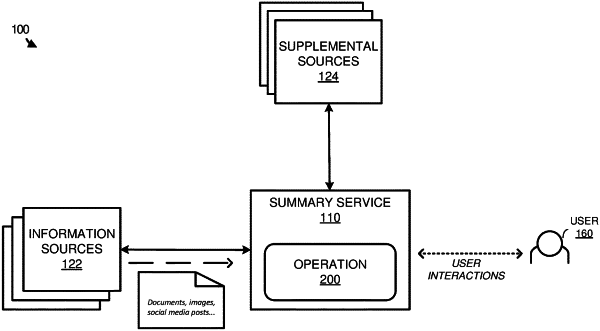| CPC G06F 16/345 (2019.01) [G06F 9/542 (2013.01); G06F 16/9038 (2019.01); G06F 18/2115 (2023.01); G06F 18/22 (2023.01); G06F 18/2431 (2023.01); G06V 10/70 (2022.01); G06V 10/764 (2022.01); G06V 10/811 (2022.01); G06V 20/41 (2022.01)] | 18 Claims |

|
1. A method of operating a summary service to provide event summarization, the method comprising:
identifying data objects that qualify for an event from a plurality of data objects obtained from a plurality of information sources, wherein the event comprises a political event, a popular culture event, a legal event or proceeding, or a military event, and wherein the data objects comprise news stories, blog posts, documents, social media posts, videos, and/or audio files;
identifying two or more classifications of interest for the data objects that qualify for the event, wherein the two or more classifications of interest comprises two or more political philosophies;
for each data object in the data objects that qualify for the event, determining whether the data object qualifies for a classification of interest of the two or more classifications of interest;
when the data object qualifies for a classification of interest of the two or more classifications of interest, classifying the data object as part of the classification of interest;
determining information differences between data objects in different classifications of the two or more classifications of interest; and
generating a summary based on the information differences.
|